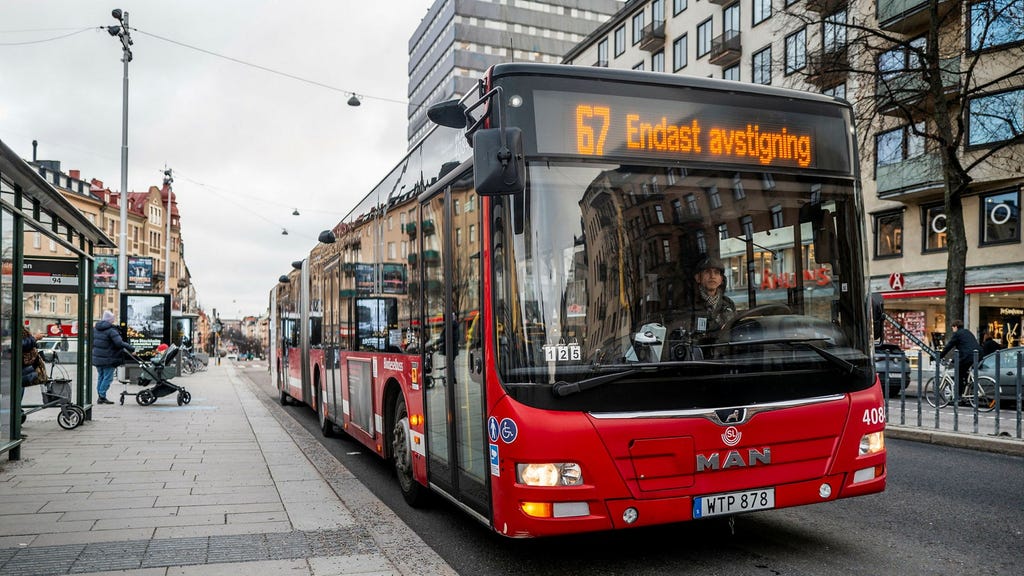The Stockholm Chamber of Commerce recently claimed that ridership on Stockholm Public Transport (SL) decreased during the autumn of 2024, despite fewer people working remotely. They attributed this decline to service cuts in bus routes. However, SL disputes the Chamber’s calculations, which are ironically based on SL’s own data. SL argues that the Chamber misinterprets the data, which represents boarding figures gathered through statistical methods, not a comprehensive passenger survey. These figures are intended for comparing weekday boarding numbers across the entire SL network, not for isolating specific modes of transport like buses. SL stresses that attaching a GPS tracker to every passenger is impractical and that the data doesn’t provide granular detail on individual journeys or the number of transfers made.
The core of the disagreement lies in how the Chamber of Commerce uses the average boarding figure of 1.61 per SL journey. This figure, SL explains, applies to all modes of transport combined and cannot be accurately applied to a single mode like buses. The Chamber’s calculation of dividing both subway and bus journeys by 1.61 is flawed because it doesn’t reflect the actual travel patterns, especially for inner-city bus routes where passengers are less likely to transfer. This misapplication of the data, according to SL, leads to an inaccurate representation of bus ridership trends. While SL acknowledges a slight decrease in average monthly bus boardings in the inner city during autumn 2024 compared to 2023, it’s significantly less than the decrease claimed by the Chamber of Commerce.
Determining the exact cause of any ridership fluctuations, particularly for specific areas like inner-city buses, is complex. SL cautions against attributing the changes solely to service cuts, as suggested by the Chamber of Commerce. Numerous factors influence ridership, including the location of businesses. SL cites the example of Telia and other companies relocating to the office complex near Friends Arena, which dramatically increased commuter rail ridership in Solna. Such shifts in business locations, coupled with unpredictable individual commuting habits, make pinpointing a single cause for ridership changes challenging. SL emphasizes the need for careful interpretation of ridership data, acknowledging that while service adjustments may play a role, they are unlikely to be the sole explanation.
SL maintains that the primary reason for the slow recovery of public transport ridership is the shift in commuting patterns due to remote work. This aligns with research indicating that remote work leads to shorter commutes and changes in other travel habits. Instead of running errands on the way home from work, people make separate, shorter trips for shopping, gym visits, or cultural events. This can impact whether individuals choose to purchase monthly travel passes, further complicating ridership trends. Understanding these evolving patterns is crucial for accurately assessing the state of public transport.
Interestingly, SL notes a positive trend: in 2024, more people chose public transport over cars during weekends in the Stockholm area. While it’s too early to determine if this is a sustained change, it represents a significant shift. Weekday travel, however, continues to see lower public transport usage compared to car travel, which is less encouraging. Despite this, SL boasts a 47% public transport share, considerably higher than other major Swedish cities like Gothenburg and Malmö, highlighting the continued importance of public transport in Stockholm.
In conclusion, the debate surrounding SL ridership highlights the complexities of interpreting transport data and the need for cautious analysis. While the Stockholm Chamber of Commerce attributes the perceived decline in bus ridership to service cuts, SL argues that their interpretation of the data is flawed. The real picture is likely more nuanced, influenced by a combination of factors including remote work, shifting business locations, and evolving travel patterns. While challenges remain in fully understanding these trends, SL’s observation of increased weekend public transport usage offers a glimmer of hope for the future of sustainable urban mobility in Stockholm.














